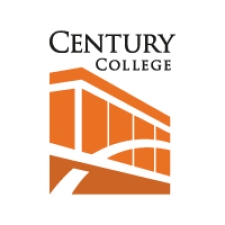
3300 Century Avenue North
White Bear Lake, MN 55110
United States
Certificates / Diplomas
Associate Degree
About
Century College is a 2-year community and technical college located in White Bear Lake, Minnesota.
As one of the largest two-year colleges in Minnesota, we serve nearly 16,400 credit and non-credit students every year.
We offer degrees, diplomas, certificates, and courses in general education and transfer, business, human services, health sciences, technology, engineering, applied design, industrial and non-credit workforce training.
With a variety of student support and student life opportunities, including athletics, student clubs and organizations, campus theatre, Multicultural Center, LGBTQ Center, Veterans Center, and much more, Century College provides a welcoming and vibrant campus community.
As a "community" college, we care about our locality. We are engaged, connected and a resource within our local communities, including K-12 and workforce/industry partners.
Century College. Discover What's Next!
As one of the largest two-year colleges in Minnesota, we serve nearly 16,400 credit and non-credit students every year.
We offer degrees, diplomas, certificates, and courses in general education and transfer, business, human services, health sciences, technology, engineering, applied design, industrial and non-credit workforce training.
With a variety of student support and student life opportunities, including athletics, student clubs and organizations, campus theatre, Multicultural Center, LGBTQ Center, Veterans Center, and much more, Century College provides a welcoming and vibrant campus community.
As a "community" college, we care about our locality. We are engaged, connected and a resource within our local communities, including K-12 and workforce/industry partners.
Century College. Discover What's Next!
Cost
Living On-Campus
19,644
Living Off-Campus
19,644
Living with Family
19,644
Average Net Price
$10,552 / year
This is the average annual amount that first-time, full-time undergraduate students pay at this institution after subtracting all grants and scholarships from the cost of attendance.
Show Net Price details
Net cost after grants and scholarships by income
$0-$30,000:
$8,624
$30,001-$48,000:
$8,307
$48,001-$75,000:
$9,938
$75,001-$110,000:
$12,642
Over $110,000:
$14,374
This net price data shows the average amount students have paid, according to their family income, after subtracting all grants and scholarships.
College Profile
Student/Faculty Ratio
24:1
Size of Student Body
7,678
Average Class Size
24
Show Undergraduate Student Body details
Breakdown by Race
Black or African American:
13%
Hispanic:
11%
Asian:
20%
White:
48%
Two or more races:
5%
International Students:
2%
Unknown:
2%
Breakdown by Age
19 and Younger:
31%
20 to 24:
36%
25 to 34:
21%
35 to 44:
7%
45 and Older:
4%
Breakdown by Gender
Men:
44%
Women:
55%
New entering students who are transfers
51%
Student Success
Graduation Rate for Two-Year Programs
21%
Show Graduation Rate 2-yr Institution details
Completers within 3 years by race
Black or African American:
9%
Hispanic:
18%
Asian:
16%
Unknown:
17%
Two or more races:
25%
Completers within 3 years by Gender
Men:
19%
Women:
23%
Retention Rate
58%
Show Retention Rate details
Retention Rate By Type
Full-time:
61%
Part-time:
45%
Campus Settings
Financial Aid
Average amount of federal, state, local, institutional or other sources of grant aid awarded to undergraduate students
$4,978
The following information pertains to first-time full-time undergraduate students.
Show Financial Aid details
Average amount of aid awarded to full-time first-time undergraduates
State/Local grant aid:
$1,413
Institutional grant aid:
$1,839
Federal grant aid:
$3,079
Average amount of grant aid awarded by income (all sources)
$0-$30,000:
$5,969
$30,001-$48,000:
$6,035
$48,001-$75,000:
$4,697
$75,001-$110,000:
$2,415
Over $110,000:
$409
School Scholarships
Yes
Financial Aid Contact
Cumulative Debt
This section shows the median debt graduates incurred to complete their degree at this institution.
Median Cumulative Debt by Degree Type
- Associate's Degree: $14,569
- Undergraduate Certificate: $9,500
Percent of Graduates With Loans
- Associate's Degree: 15%
- Undergraduate Certificate: 21%
Admission Information
- Common applications (online)
- System applications (online)
- School applications (online)
- High School Diploma or GED
- Transcripts
- Accepts dual credits
- Accepts exam-based credits
- Institution awards credits for military training
Application Timelines
Financial Aid Application Deadline
April 15th
Open Admissions Deadline
One week before the start of each semester
Admissions Contact
Graduate Employment Outcomes
The data displayed below comes from the Graduate Employment Outcomes tool and only reports on graduates employed in Minnesota. This section shows employment data for graduate class of 2020, including percent of graduates with full-time employment in the 3rd year after college graduation and the median annual wages by award level, according to the Minnesota unemployment insurance records. Data does not include federal employees, self-employed (e.g. professional freelancers, artists, developers, designers, business owners), military, or individuals who moved out of state for a job. The list below may be incomplete and limited to some majors. Additionally, data has been suppressed when it refers to 10 or less students.Jump to:
This profile features institution-wide data. Be aware that some categories may not be showing and that data is suppressed when reporting is for 10 or less students. Most data and terminology is sourced from IPEDS. To learn more about each section, please refer to Data Sources.
The College Search Tool provides information and reported data for postsecondary institutions in Minnesota that receive federal and state financial aid. For licensed occupational training providers in Minnesota, please visit OHE's Licensed Career Schools.

